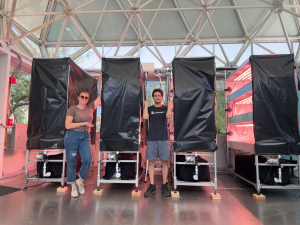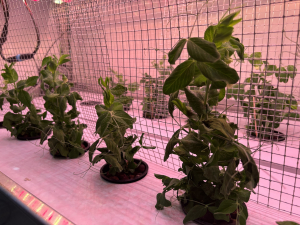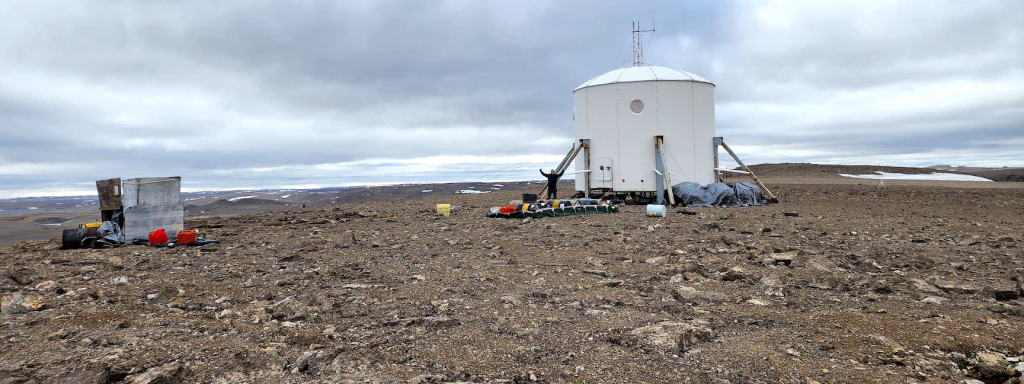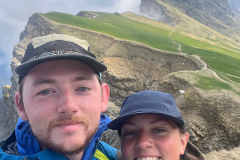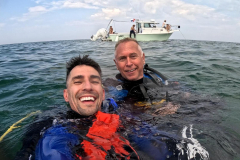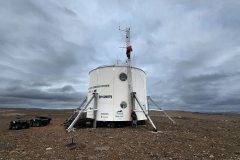Bioregeneration at SAM
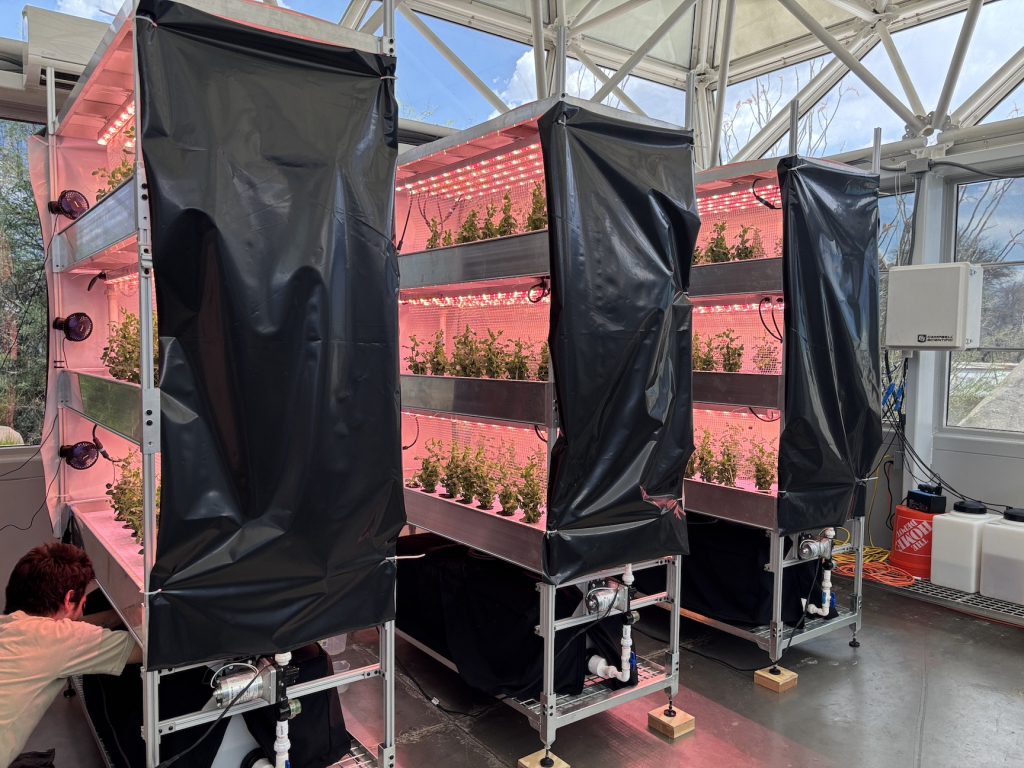
This spring brought us to the close of four years of design, development, and construction of a unique, world-class, hermetically sealed research facility for bioregeneration (air revitalization with plants) for long-duration human space exploration.
SAM is now actively hosting what will be the first of many years of experiments in which we grow a specific species of food cultivar to determine it’s growth rate and carbon sequestration against three Vapor Pressure Deficit values.
My graduate student Atila Meszaros and SAM Site Manager Luna Powell managed a perfectly executed test run of dwarf wheat, peas, and quinoa. The peas are a unique variety developed by Dr. Bruce Bugbee and his team at Utah State University. Smaller than standard, they produce a remarkably high seed yield–perfect for the Moon or Mars.
Furthermore, we are working with Dr. Lucie Poulet and her graduate student to determine key characteristics of the peas, including the density and dimensions of the leaves. All of this work is inspired by the legacy of NASA veteran Raymond Wheeler who was instrumental in motivating my dive into the world of bioregeneration in 2017 with my very first concept for SIMOC.
June through mid August saw completion of two full, six week runs of peas (2 weeks incubation at B2; 4 weeks in SAM) only to be met with the reality of one too many system failures and mistakes, forcing a total restart this past Thursday. That is the rigor of science–if the experiment is not done right, you do it again … and again. I am proud of Atila and Luna for not hesitating to set aside more than three months of hard, daily work in the name of solid science.
Our current experimental configuration is built around a nearly fully automated, computer controlled system that Atila, Luna, and Tanner Conrad, Research Technologist (under Dr. Murat Kacira) at UA CEAC assembled and programmed. It maintains a constant 800 ppm of CO2 such that by monitoring the amount of CO2 injected (from a cryogenic tank via gas manifold) we know the maturity of the peas and can plot, with a high degree of accuracy, the growth function and as such, ability for any food cultivar to revitalize cabin air.
The culmination of this series of experiments comes in October in conjunction with the World’s Biggest Analog where veteran SAM team member Matthias Beach will be sealed inside for two weeks. During the first week his CO2 will be sequestered by the peas (at least, that’s the hypothesis). On the morning of the 8th day he will harvest the peas, secure them in air-tight bags, and then complete the mission with no CO2 removal to demonstrate the amount of CO2 that was being sequestered by the plants.


